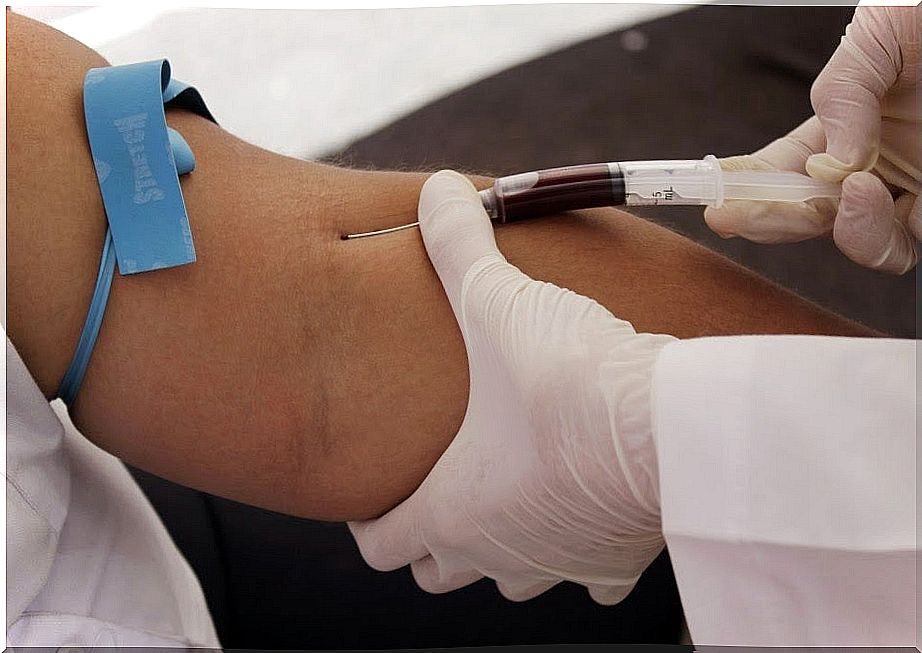Whipple’s Disease Or Intestinal Lipodystrophy
Whipple’s disease (WD) or intestinal lipodystrophy is a chronic infection caused by the bacteria Tropheryma whipplei. Although it usually causes intestinal damage, it is a mulsystemic pathology that affects many organs, including the nervous system and joints.
It is a rare disease that mainly affects men in their 40s. The published cases do not reach 2,000 affected.
Pathogenesis of Whipple’s disease
The exact way in which the bacteria reaches the body is not known. Since the main manifestations are intestinal, it is believed that it enters the body orally, by drinking water or consuming food that contains the microorganism.
Tropheryma whipplei is a commensal microorganism, that is, it does not produce the disease by itself. In fact, up to a third of the population is a carrier of this bacterium. However, a limited number of carriers develop Whipple’s disease, so it is assumed that factors from the host, bacteria, and the environment may contribute to pathogenesis.
Most patients are between the ages of 48 and 54 when they are first diagnosed. Furthermore, the prevalence is higher in men than in women.
Inside the body, the bacterium Tropheryma whipplei divides into cells of the immune system called macrophages. These cells are responsible for capturing bacteria and destroying them. It appears that macrophages from WD patients capture the bacteria but cannot destroy it. Therefore, this is divided producing the death of macrophages.
Whipple’s disease clinic

Whipple’s disease is characterized by the following symptoms :
- Diarrhea.
- Weightloss.
- Joint pain or arthralgia that can appear years before the rest of the symptoms.
The onset of the disease is very nonspecific, with fever, joint pain, loss of appetite, fever, abdominal pain, etc. Joint pain is usually multiple and affects several joints, although it is more common to appear in the joints of the legs. It is usually distributed symmetrically, that is, it damages the same joint on both sides of the body.
As the condition progresses, intermittent diarrhea may appear, associated or not with other intestinal symptoms. In addition, diarrhea is accompanied by symptoms of nutrient malabsorption, presence of fat in the stool (steatorrhea, stool floating in the toilet), or loss of muscle mass.
When the disease is established, other symptoms appear such as weight loss, neurological disorders and skin disorders.
Neurological involvement usually produces dementia, so it may be of interest in the differential diagnosis of other similar conditions such as Alzheimer’s disease. On the other hand, skin involvement usually manifests with areas of darker skin (hyperpigmented) in areas exposed to the sun.
Diagnosis of the disease

It is essential to go to the doctor to perform the relevant tests and thus be able to successfully diagnose the disease. A blood test can be done, although it does not confirm the disease. Some of the findings that we can find are:
- Signs of inflammation in the early stages: increased white blood cells, anemia, or increased platelets. Acute phase reactants are also usually elevated. This is the name given to different molecules in the body whose levels rise if there is inflammation.
- Malabsorption data, when diarrhea has been established.
To confirm the disease, the existence of Tropheryma whipplei in the body must be demonstrated . Therefore, it is necessary to perform a biopsy, usually intestinal. What is done is to remove a portion of the intestine and it is analyzed microscopically. Macrophages will be seen in which there are vacuoles or granules that are stained with a material called PAS. They are said to be PAS + vacuoles.
When the symptoms are not so clear, other tests such as a cranial MRI can be performed in the case of neurological involvement to rule out other causes of dementia.
If the suspicion of WD is high and the biopsy shows no specific data, look for T. whipplei DNA . This is achieved thanks to molecular tests, such as the polymerase chain reaction or PCR.
Treatment of Whipple’s disease

The treatment for this disease consists, fundamentally, in the administration of antibiotics. Once the diagnosis is confirmed, drugs that reach the nervous system must be used to prevent the disease from reactivated. Co-trimoxazole is usually used for at least 1 year.
It should be noted that the symptoms disappear quickly. However, despite the initial response to antibiotics, the disease can recur. Hence the importance of maintaining good medical control.









